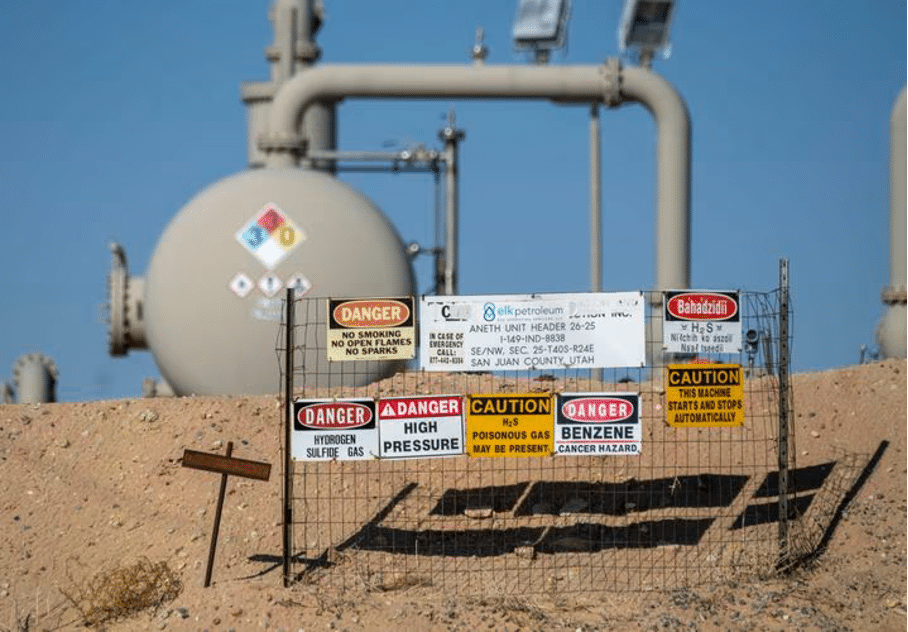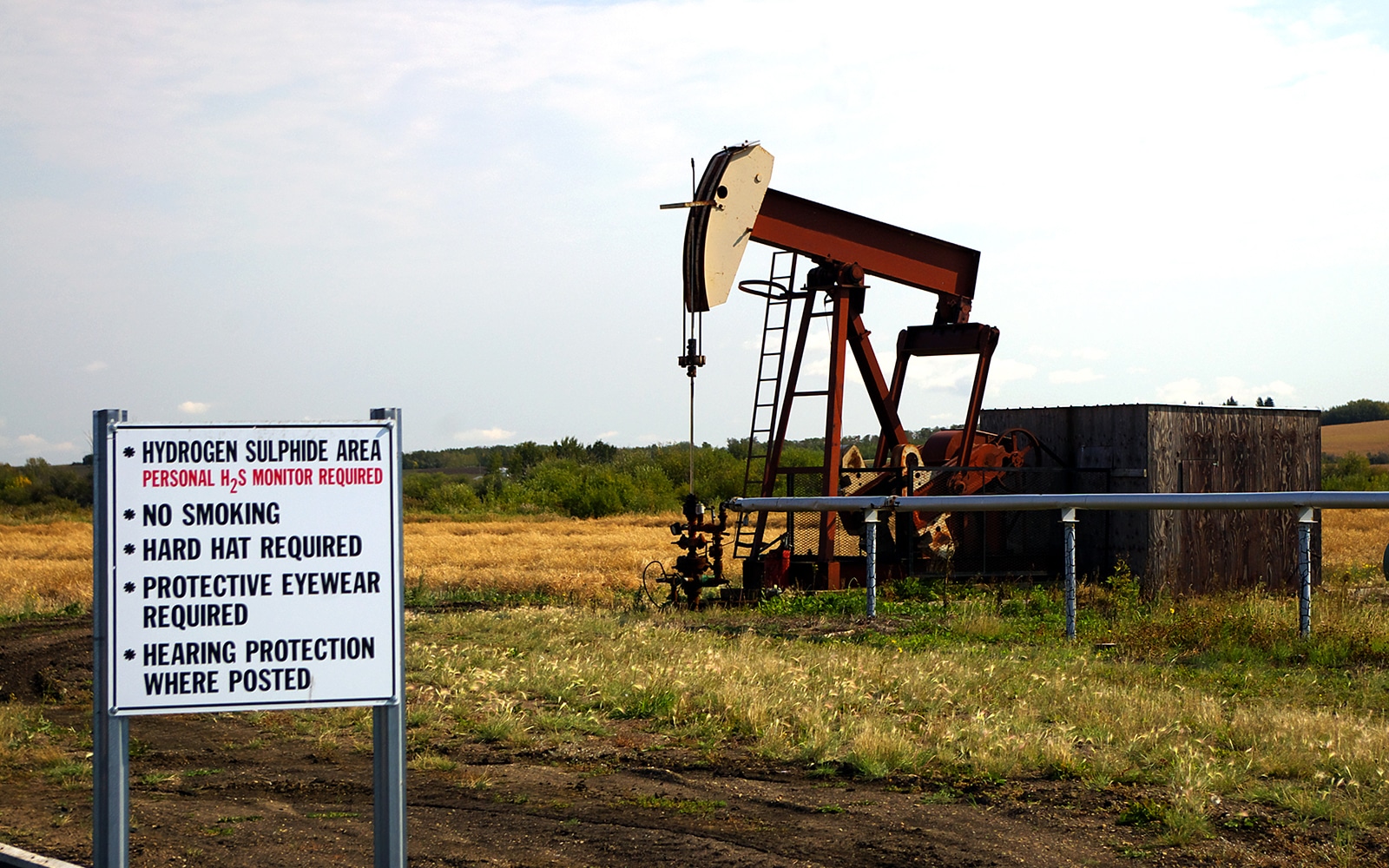- Hydrogen sulfide detection is necessary because the gas is highly hazardous as it is flammable and causes health effects. Levels above 100 ppm can cause instant death.
- In the oil and gas industry, workers are at risk from hydrogen sulfide exposure during mining, extraction, processing, transportation, and maintenance work.
- To ensure worker safety, providing them with portable personal hydrogen sulfide detectors is the single-most crucial measure the stakeholders can adopt.
- Other means of safeguarding worker safety are appropriate protective equipment, training, and prevention of gas buildup.
Oil and gas use still contributes to a significant proportion of energy sources, and the working conditions in this industry can pose health and safety risks for workers. Hydrogen sulfide is the number one occupational risk associated with the oil and gas industry. The stakeholders must know the hazards to prevent disasters by monitoring hydrogen sulfide with effective hydrogen sulfide detection technology and taking relevant safety measures.
Hydrogen Sulfide Formation in the Oil and Gas Industry
Between 2001 and 2017, exposure to Hydrogen sulfide resulted in 106 fatalities in the gas and oil industry in the US alone, according to Occupational Safety & Health Administration (OSHA).
Hydrogen sulfide (H2S) is a colorless, combustible, and water-soluble gas. At concentrations of 8-50 parts per billion (ppb) in air, H2S smells like rotten eggs. At higher concentrations of 150 ppb, it results in a loss of sense of smell. The gas is heavier than air and accumulates in low-lying areas. =
Hydrogen sulfide is found naturally in the atmosphere at very low concentrations of 1 ppb as it is produced by decomposing organic matter. However, H2S levels are significantly higher in natural gas and petroleum oil. Natural gas contains up to 28 percent of H2S. About 15-25 percent of natural gas in the US and 30 percent globally have H2S. Natural gas containing H2S is called sour gas.
H2S can be generated through the following means in the oil and gas industry:
- H2S is a natural gas and oil component and occurs in the mines. It is generated from sulfate minerals in soils that are reduced through microbial action or thermochemical processes.
- The technologies used for extracting oil and gas also produce H2S. Hydraulic fracturing for producing shale oil and gas and steam-assisted gravity drainage for making oil sands convert the sulfur in petroleum into H2S. This process makes hydrogen sulfide detection an essential safety measure.
- H2S is released from refineries where the fossil fuels undergo purification and refining, turning it into an air pollutant that can be hazardous.
- H2S is also released during anaerobic decomposition in alternate biogas production.
Understanding where workers in the oil and gas industry are susceptible to H2S exposure is also necessary to take relevant steps to protect workers’ health and lives.
Hydrogen Sulfide High-Risk Spots
H2S poses an upstream and downstream risk in the oil and gas supply chain at several crucial points discussed below.

Figure 1: Leakages from oil and gas lines near Montezuma Creek, on Navajo Nation, Sept. 2021”, Rick Egan, The Salt Lake Tribune. Image credits: https://www.sltrib.com/news/2021/10/02/residents-call-reform/)
Exploration and Extraction
Since H2S is present in mines and is produced during extraction, these are places where workers are exposed to H2S.
As fossil fuel sources become scarce, the petrochemical industry relies on newer sources and technologies, like hydraulic fracturing. Also, sour gas fields that yield gas and sulfur are attractive to offset costs and make gas extraction more profitable. So, chances of H2S exposure are high at new drilling sites due to well blowouts, extinguished flares, line releases, gas venting, and leakages, see Figure 1.
The refining or sweetening process of sour gas also increases the H2S exposure of workers at refineries. When working with new sources and production techniques of oil and gas, proper precautions and safety measures are necessary to ensure workers’ welfare, such as.
Oil and Gas Transportation
People working on pipelines have suffered from H2S exposure because of a lack of measurement and safety equipment.
Transporting substances like sour gas increases the risk, as it is more corrosive and affects pipes than natural gas. During checks and maintenance, workers are more at risk from H2S-rich sour gas due to possible pipe leaks. Personal gas detectors will allow workers to make informed decisions and act quickly.
Maintenance
Besides pipelines, there are several other spots where oil and gas industry maintenance exposes workers to H2S. These can be within tankers or while repairing hatches. Workers are most at risk in confined spaces, and the hazardous H2S can accumulate in tankers. Personal gas detectors allow workers to decide whether going into confined spaces is safe.
Hydrogen Sulfide Risks
Hydrogen sulfide is a risk because it is flammable and has health effects on people.
Explosion Risk
When mixed with air, hydrogen sulfide can cause explosions when it comes in contact with ignition sources. H2S gas burns to form toxic gases like sulfur dioxide. This risk can be managed effectively through consistent hydrogen sulfide detection.
Health Risks
H2S enters the human body through inhalation, and being a broad-spectrum poison, it affects several organs. The nervous and respiratory systems are the most affected. The effects of H2S depend on the gas concentrations and duration of exposure.
- Low concentrations of H2S produces irritation of the eyes, nose, throat, or respiratory system, like burning of the eyes, cough, etc. The effects of low levels can be delayed for hours or days. Asthmatics will start to have breathing problems even at low-level H2S exposure. Repeated exposure causes more severe symptoms like fatigue, headache, eye inflammation, digestive disturbances, and weight loss. Hydrogen sulfide detection can help prevent prolonged exposure at these low levels.
- Moderate concentrations of H2S cause severe eye problems and respiratory irritation, nausea, headache, dizziness, coughing, and breathing difficulties.
- High concentrations of H2S exposure are serious and lead to shock, convulsions, inability to breathe, coma, and death; these effects can be extremely rapid. Knockdown or rapid unconsciousness causes workers to fall and injure themselves. At 100 ppm and more, H2S is IDLH (immediately dangerous to life and health), and people are overcome and can’t attempt to escape. Results are immediate, and people can die from one or more breaths of H2S.
Exposure to liquid H2S causes frostbite or blue skin. People drenched in liquid H2S must remove their clothing and avoid ignition sources.
Mitigating Potential Hazards
Ensuring workers’ safety and health from H2S exposure risks involves detection, prevention, and protection.
Detecting Hydrogen Sulfide Exposure
The first crucial step is giving workers portable gas detection instruments for real-time detection. When working in remote areas or decommissioning sites, lone workers should all have hydrogen sulfide detectors to warn them of potential H2S leaks or buildup. All workers must be trained in the use of gas detectors and be able to understand the readings. Testing should determine health and fire/explosion risks to people.
Measuring and monitoring the atmosphere before entering risky spaces through gas detection instruments is considered the most important development that has protected workers in the oil and gas industry.
Effective gas detectors like Interscan’s GasD 8000 Series Portable Gas Analyzers have six devices measuring different H2S levels from 0-200 ppb to 0-50 ppm. The devices have audio and visual alarms and a 32 GB SD card for data logging. It has a 12-inch or 30.5-cm long Teflon sample probe for safer sampling.
Besides immediately saving workers from risks, daily readings for H2S can have further benefits if the data is logged regularly, such as allowing safety managers to:
- Track patterns and identify potential risk sites before any issue leads to problems.
- Maintain a record of exposure history for individual workers from their gas detection readings in case of illness.
- Developing a safe work plan based on the known H2S levels associated with a particular site or activity. The managers can train and make workers aware of risks.
Protection Against H2S Exposure
There are various steps that companies can take after H2S is detected. The list below mentions some measures.
- The area or confined space must be ventilated to allow H2S out.
- If H2S cannot be removed, workers entering these spaces must have appropriate respiratory protection, communication, and rescue equipment. OSHA has specific recommendations for people entering confined spaces after monitoring and identifying toxic gases.
If the H2S levels are above 100 ppm or the IDLHl levels, according to OSHA, workers must have “a full facepiece pressure-demand self-contained breathing apparatus” that has a minimum service of thirty minutes or a “full facepiece pressure demand supplied-air respirator” combined with a self-contained air supply.
If the H2S levels are below 100 ppm, an air-purifying respirator with a filter cartridge appropriate for hydrogen sulfide can be used. OSHA recommends a full facepiece respirator to prevent eye irritation.
- Monitor workers sent to areas of high H2S exposure for overexposure signs.
- Rescue operations must be conducted by people trained for rescue and only with appropriate respiratory protection.
Preventing H2S Risks
Each company can take measures in their plant to ensure that H2S levels are under control. Several activities, processes, and areas are well-known for being a high H2S risk. The company should use tested technology to improve air quality by reducing H2S levels through air scrubbing and pollution capture in these areas.
Worker Safety
Reducing H2S exposure risks for workers by using proper gas detection and prevention technology, equipment, and staff training can limit health risks and causalities. Governments can help by setting stringent standards and guidelines for the oil and gas industry to safeguard workers’ safety by all possible precautions and protection measures covering new sources, sites, and production methods.
Written by:
Vijayalaxmi Kinhal
Science Writer, CID Bio-Science
Ph.D. Ecology and Environmental Science, B.Sc Agriculture
Sources
Baratt, P. (2022, Aug 1). Hydrogen Sulfide: Understanding Exposure Risk in the Oil & Gas Sector. Retrieved from https://ohsonline.com/Articles/2022/08/01/Hydrogen-Sulfide.
Earthworks. (n.d.). Hydrogen Sulfide. Retrieved from https://earthworks.org/issues/hydrogen-sulfide/
Marriott, R.A., Pirzadeh, P., Marrugo-Hernandez, J.J., and Raval, S. (2015). Hydrogen sulfide formation in oil and gas. Canadian Journal of Chemistry. 94(4): 406-413. https://doi.org/10.1139/cjc-2015-0425
OSHA. (2005). Hydrogen Sulfide OSHA Fact Sheet. Retrieved from https://www.osha.gov/sites/default/files/publications/hydrogen_sulfide_fact.pdf
OSHA. (n.d.). Hydrogen Sulfide OSHA QuickCard™. Retrieved from https://www.osha.gov/sites/default/files/publications/hydrogen_sulfide.pdf


